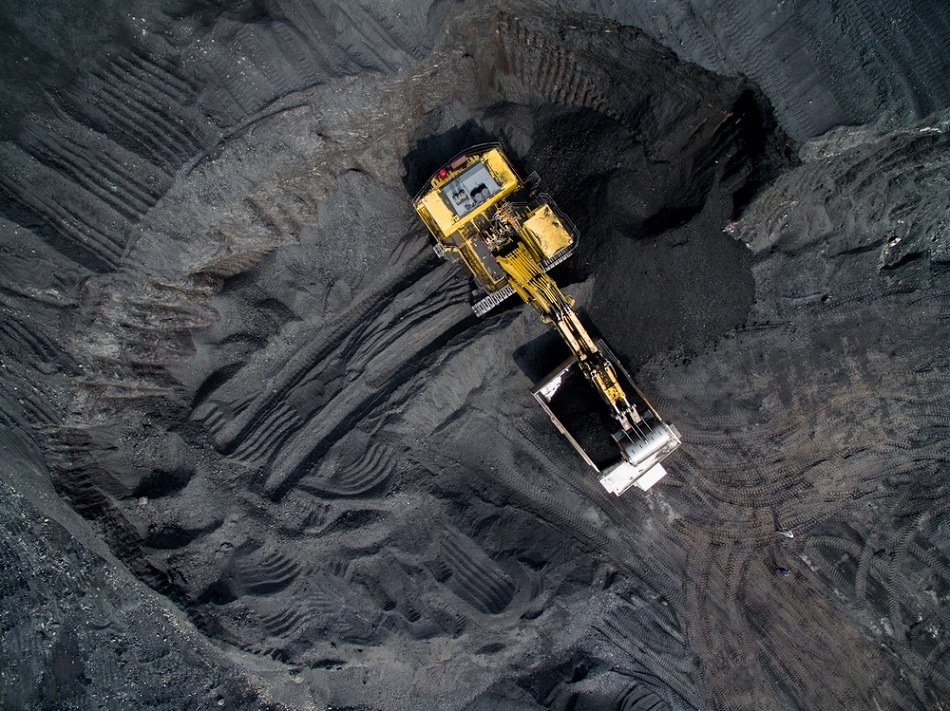
The main countries around the world that produce coal include China, the United States, India, Australia and Indonesia. The successful mining of coal allows for the extraction of iron ore. It is a metal alloy that can allow for the further extraction of useful metals, as well an important energy source that is still widely used around the world.
Coal can be mined by two primary methods including surface, or ‘opencast’ mining, or underground ‘deep’ mining, where coal can be found as deep as 1,000 feet or more below the surface.
In both cases, miners extract coal by using giant machines that remove the top layers of soil and rock within a mine to expose the coal.
As coal is extracted from the walls of the mine, the release of extremely harmful dusts in the form of both heavy and lightweight particles occurs. While the heavier and larger coal dust particles can settle out of the mine quickly, fine and more lightweight coal dust particles are carried within the air for longer distances throughout the mine.This allows the particles to not only settle along ventilation panels but also enter the airways of exposed miners.
As the dust levels raise within the mine, two serious problems can occur including an explosion because of the coal dust particles entering the panels, as well as potentially devastating respiratory illnesses for the exposed miner.
It is estimated that as little as 0.01 inches of floating coal dust can propagate a potential explosion, and various pulmonary illnesses, the most common of which being black lung disease or coal worker’s pneumoconiosis (CWP), are associated with the exposure of coal dusts.
The United States Department of Labor sets specific guidelines for coal mining companies to follow regarding the acceptable and safe levels of coal dust particles that can be present within the mine.
Aside from installing functional ventilation units surrounding the mines, government run organizations such as the National Institute for Occupational Safety and Health (NIOSH) conduct various underground and laboratory mine inspections to monitor dust levels throughout the year1.
One way in which the potential hazards associated with coal dust production can be avoided is through a process known as rock dusting. Rock dusting involves the spraying of rock dust, which is pulverized, or rocks that have been crushed into very fine powder, elements including dolomite, gypsum, anhydrite, shale, adobe, limestone and other inert materials onto the walls of the coalmine2.
This spraying reduces the amount of coal dust that is present within the mines, thereby reducing the potential explosion and health hazard that is associated with its airborne presence.
The mechanism that allows rock dusting to successfully inhibit coal dust explosions is believed to be attributed to the adsorption of the thermal energy of the unburned coal particles. With a size requirement that ranges from 75-200 mm in diameter of the coal particles, as well as a fluctuation in its ability to protect against coal dusts of variable moisture levels, rock dusting has its limitations.
For example, the application of rock dusting in an area that contains wet or dried coal dusts could form a “cake” area within the mine that does not change the explosion potential of the dusts.
As the primary means of defense against coal dust explosions within United States mines, rock dusting has been shown to successfully prevent flame induction in both experimental procedures and real life applications.
Image Credit:
Mark Agnor/ Shutterstock.com
References:
- “Rock dusting makes coal mining a little safer” – Aggregates Manager
- “Rock Dusting” – The United States Department of Labor
Disclaimer: The views expressed here are those of the author expressed in their private capacity and do not necessarily represent the views of AZoM.com Limited T/A AZoNetwork the owner and operator of this website. This disclaimer forms part of the Terms and conditions of use of this website.